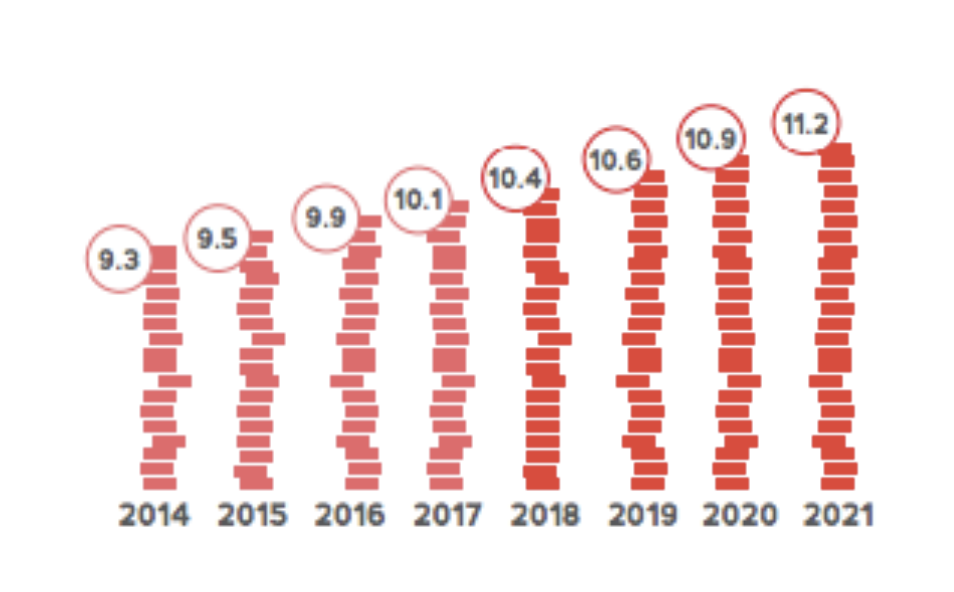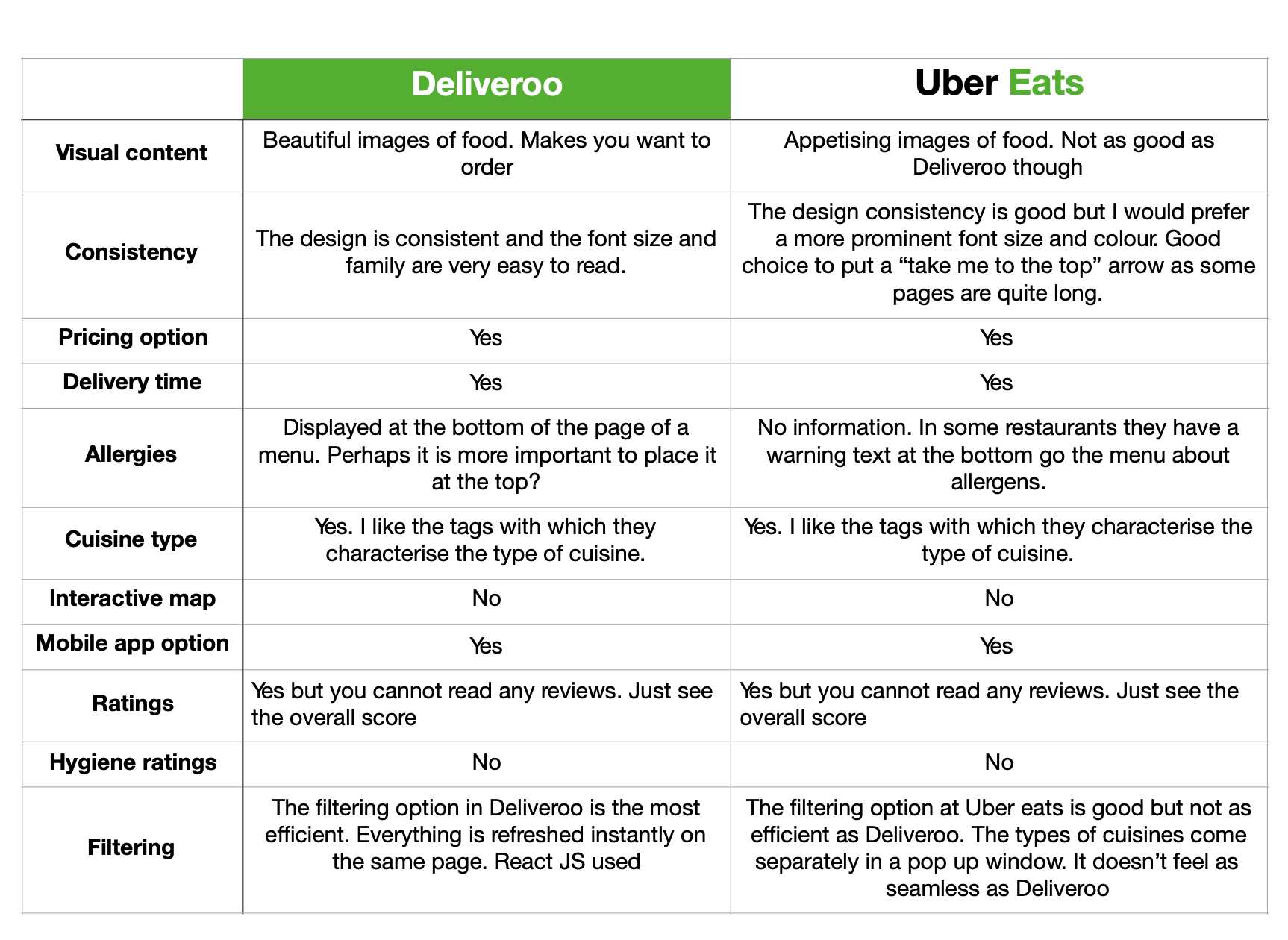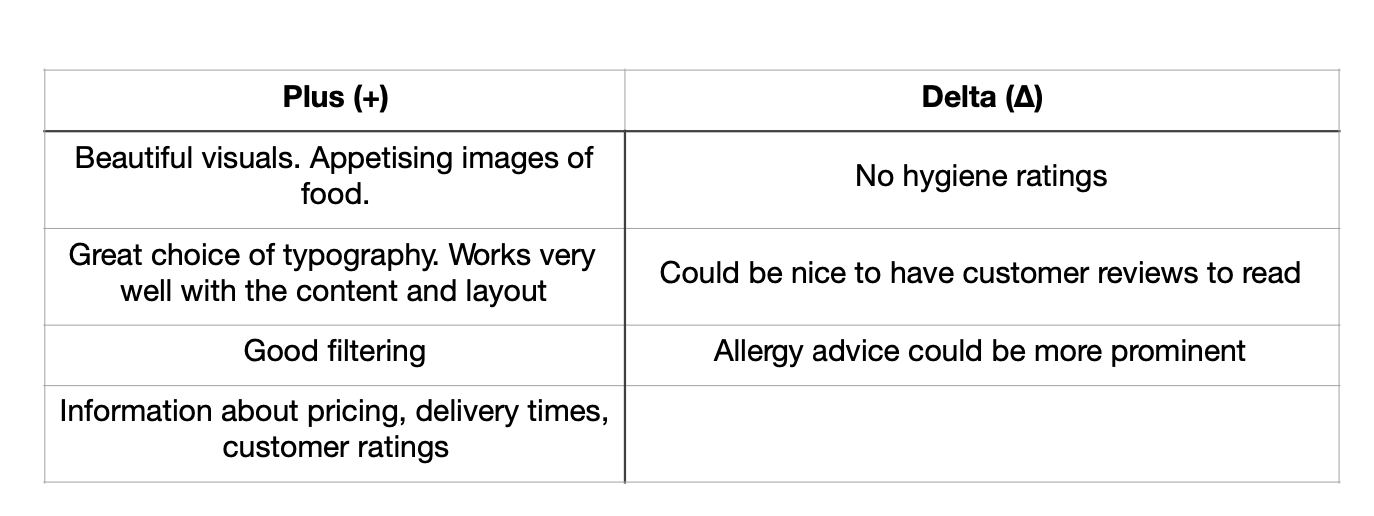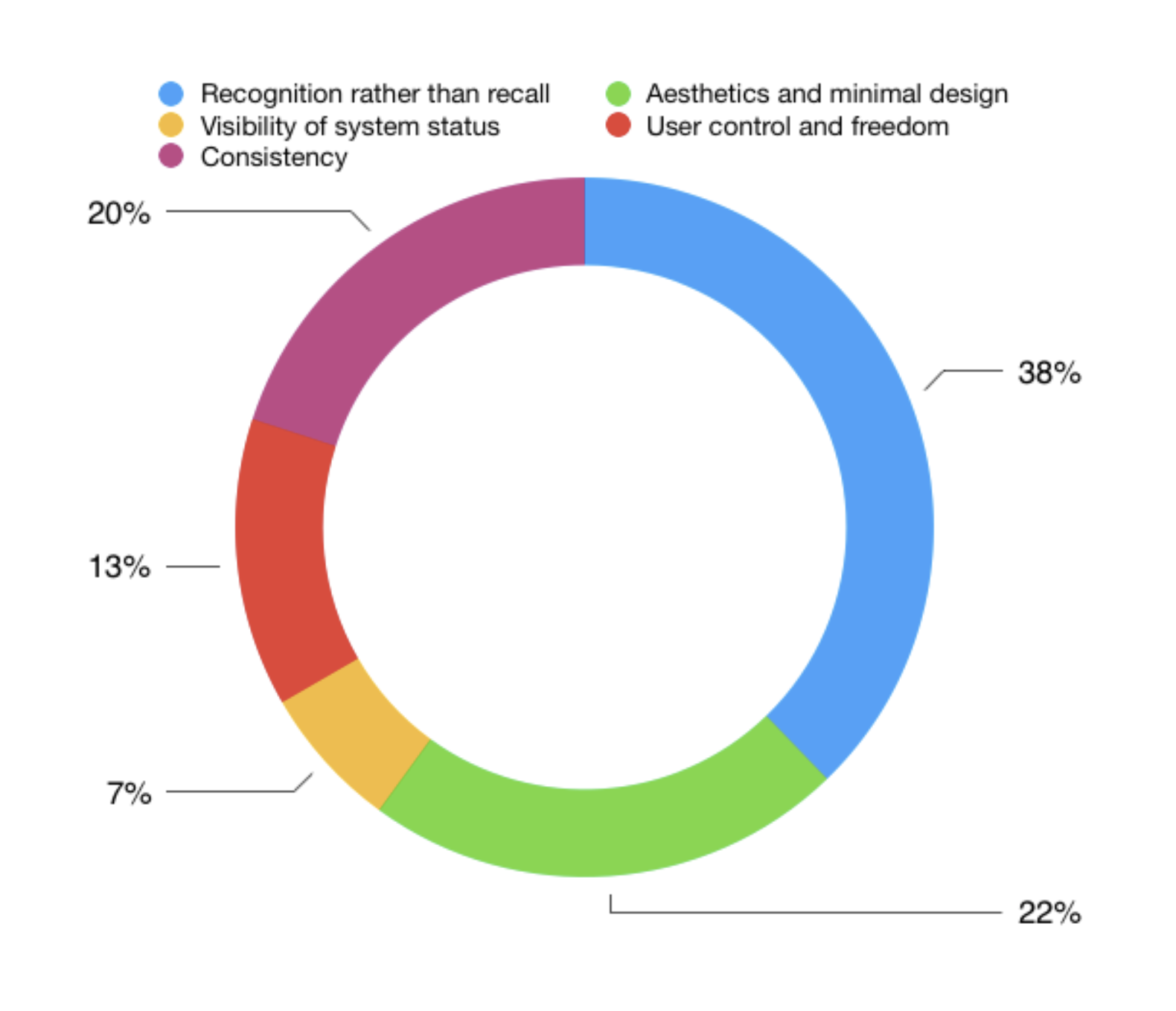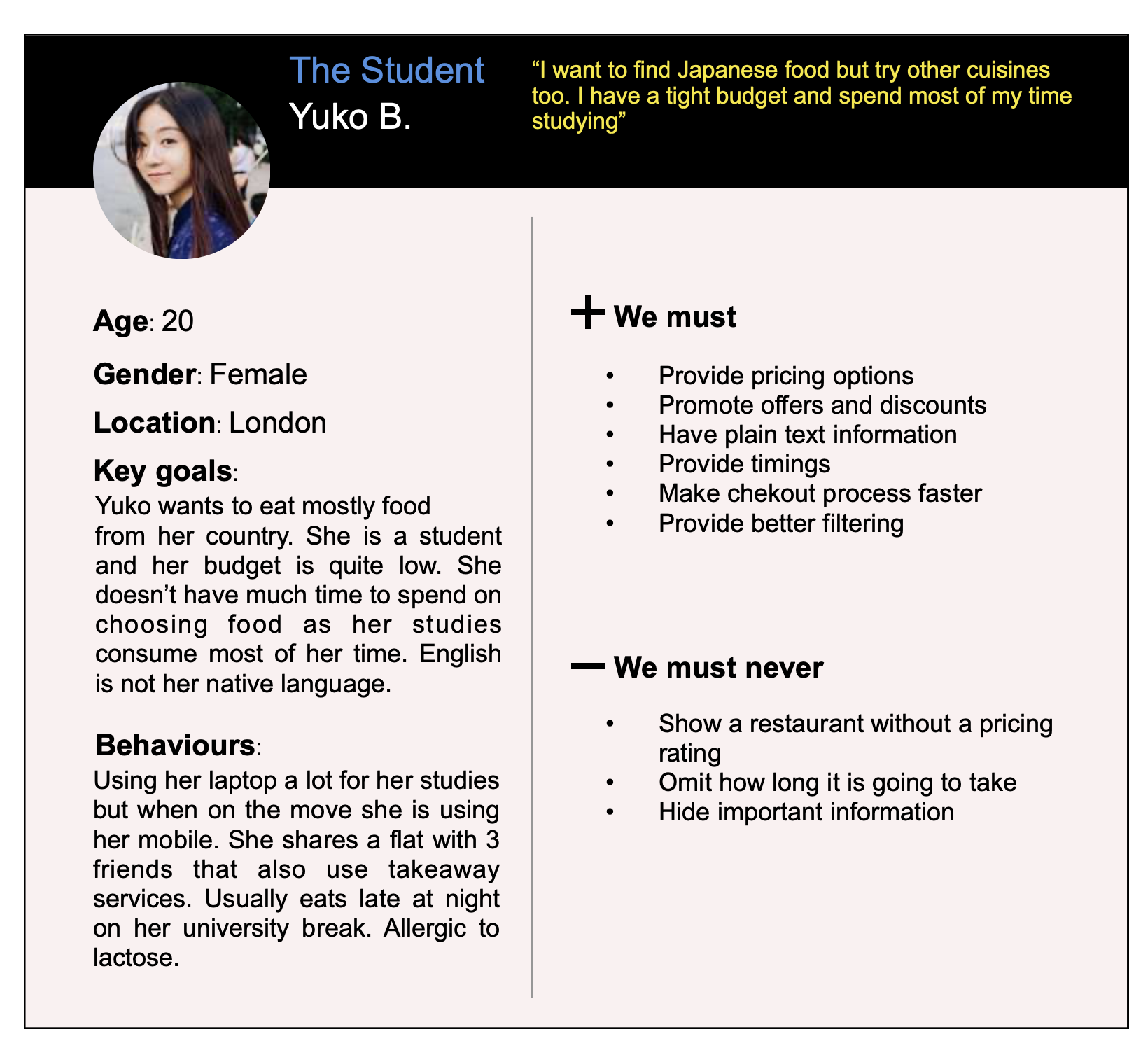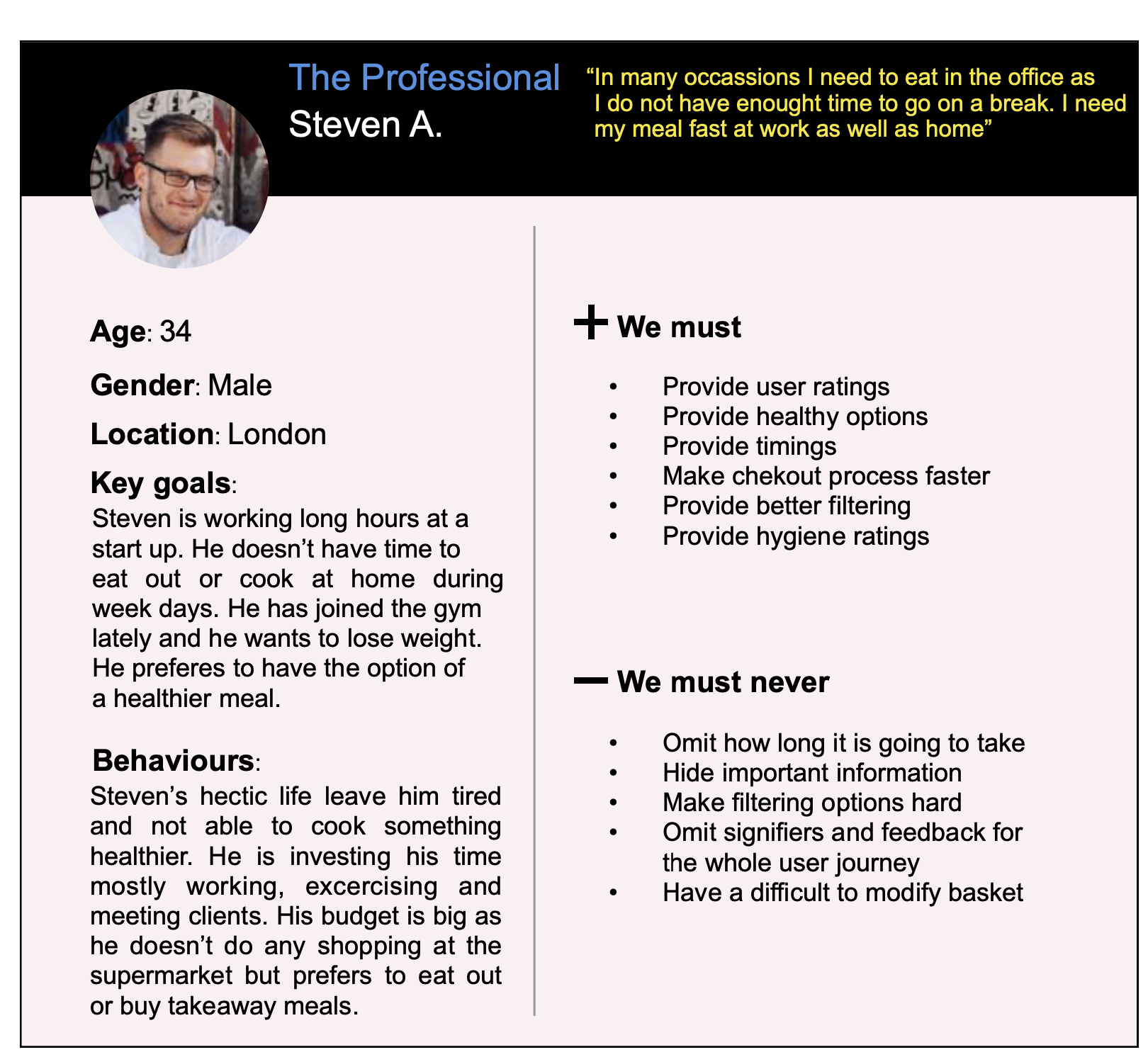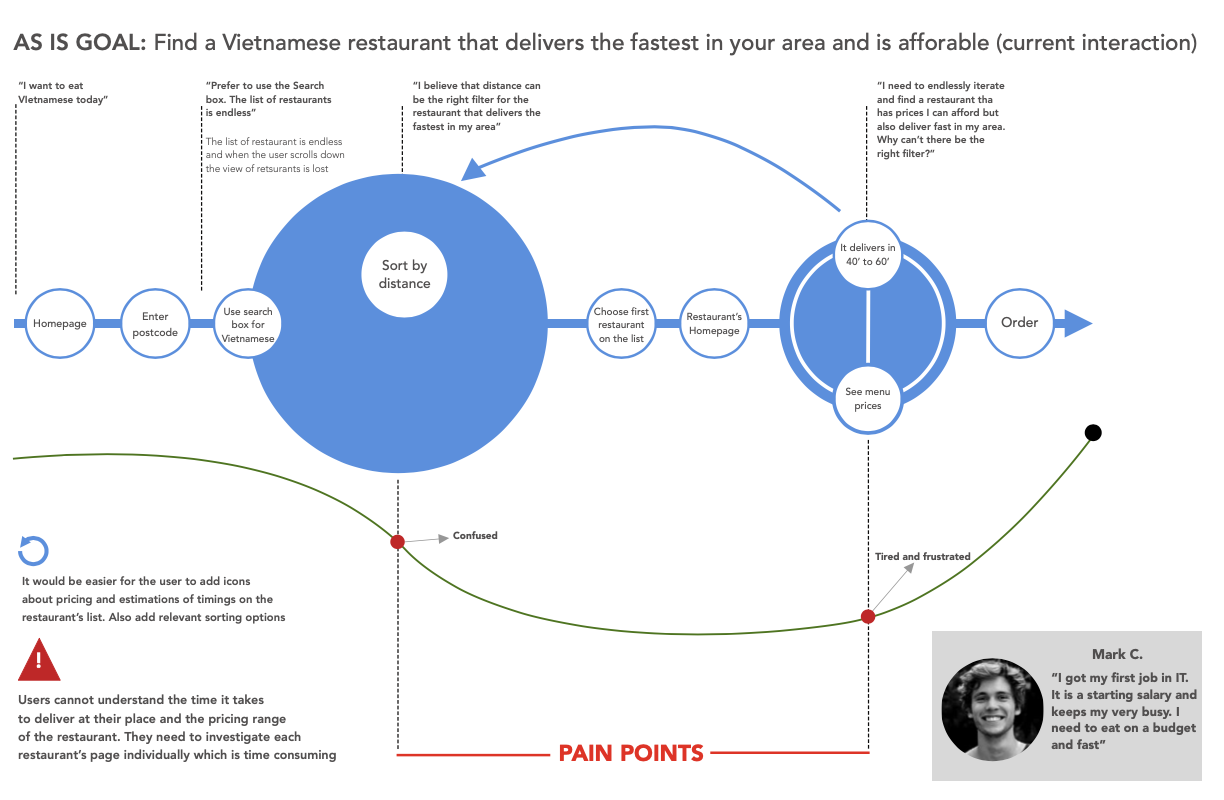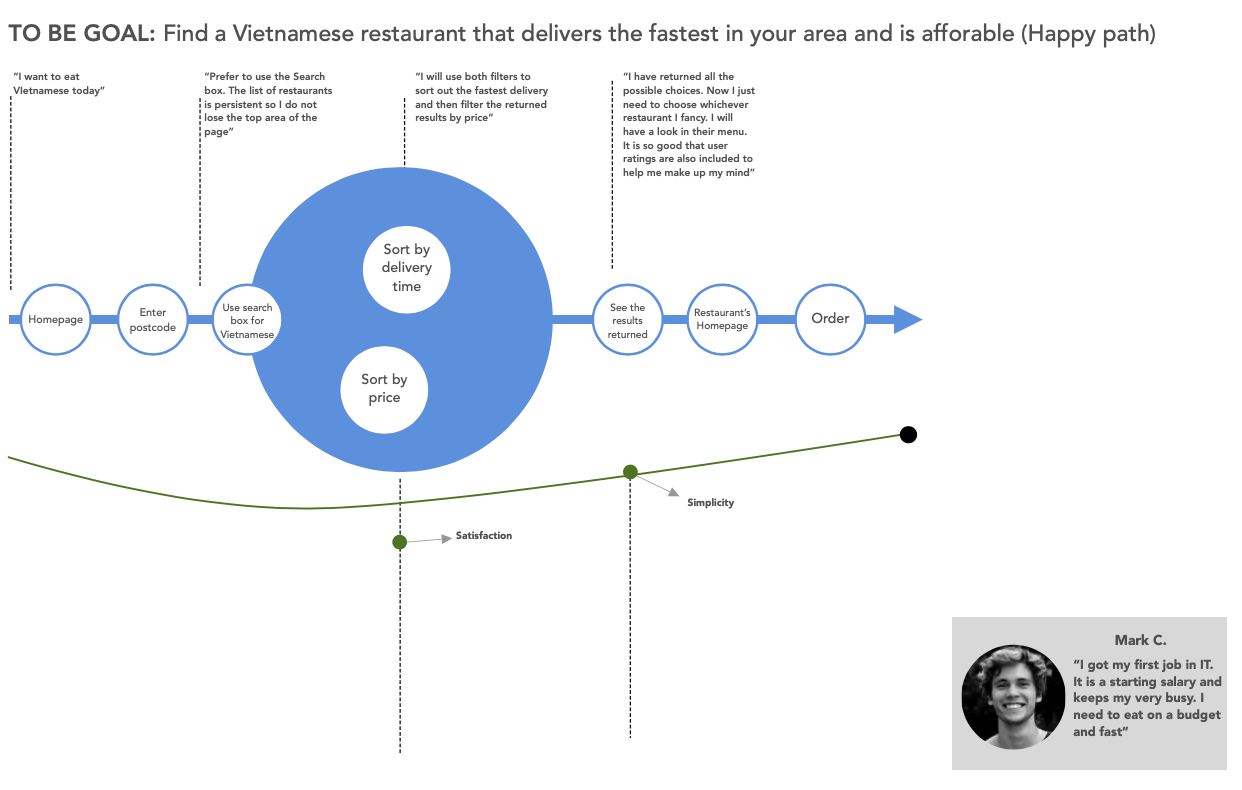
About the project
I have decided to re-design the desktop web application of Just Eat because at the time of working on this project I personally was struggling to use the service. As a person that is eating takeaways very often using services such as Deliveroo and Ubereats I wanted to try something different. Just Eat has been a leader in the online takeaway food market worldwide offering to the customers a secure platform for ordering and paying for food from the restaurant partners. On average, it is processing 3 orders per second in the UK thanks to their nine million customers and the company’s value has reached £5.5bn, twice as much as M&S. Whereas the native app is more usable, the desktop web application was suffering of major usability issues.

